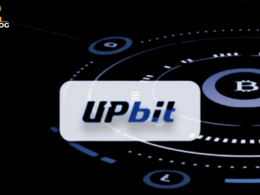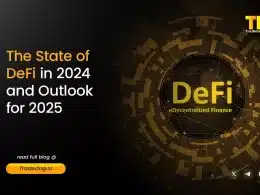Quick Links
Ethereum, the leading platform for smart contracts, continues its relentless pursuit of scalability and a seamless user experience. With a price of $3,587 and a market cap of a staggering ~ $428 billion (as at the date of writing), Ethereum faces immense pressure to handle increasing user demand. The upcoming Pectra upgrade, scheduled for Q1 2025, signifies a significant leap forward in addressing these challenges. Following the successful Dencun upgrade in March 2024, which reduced transaction fees for Layer 2 solutions, Ethereum’s developers are setting their sights on further improvements. Pectra aims to address scalability concerns and enhance efficiency through a combination of strategic changes at the execution and consensus layers.
A Multi-Layered Upgrade
Pectra is a combined upgrade, consisting of two individual parts: Prague for the execution layer and Electra for the consensus layer. This naming convention reflects Ethereum’s unique approach, where execution layer upgrades are named after Devcon locations (Prague hosted Devcon 6) and consensus layer upgrades follow an alphabetical order of stars (Electra being the “E” upgrade).
Core Features of Pectra
While Pectra paves the way for future substantial upgrades, it also introduces several impactful features in itself. Here are some key aspects to consider:
- EIP-7251: Increased Validator Staking Limit
One of the most significant changes introduced by Pectra is EIP-7251. Currently, validators on the Ethereum network can stake a maximum of 32 ETH. This limit can be cumbersome for large staking providers who need to manage numerous validators to stake larger amounts. EIP-7251 proposes to increase this limit to a substantial 2,048 ETH.
This change offers several advantages. Firstly, it allows staking providers to consolidate their operations by requiring fewer validators. This reduces the number of messages that need to be relayed across the network, potentially improving communication efficiency and overall network performance. Additionally, it reduces the burden on staking providers by simplifying their management processes.
- PeerDAS for Enhanced Rollups
Rollups are a scaling solution that allows for processing a large number of transactions off-chain before submitting them to the main Ethereum blockchain for final settlement. Peer Data Availability Sampling (PeerDAS) is an optimization technique designed to further improve the efficiency of rollups. It builds upon the concept of “blobs” introduced in EIP-4844, which allows for more efficient storage of transaction data on Layer 2 networks. PeerDAS essentially extends this functionality, enabling even faster and cheaper transactions on Ethereum.
- EVM Object Format (EOF) for Improved Smart Contract Functionality
The Ethereum Virtual Machine (EVM) is the core engine that executes smart contracts on the Ethereum network. EOF is a proposed improvement that aims to enhance the security and developer experience for smart contracts. By introducing a new format for storing and processing smart contract data, EOF promises to streamline development processes and potentially improve the overall user experience for interacting with smart contracts.
A Look at the EIP Suite
Pectra is not just about a few headline features. It incorporates a comprehensive set of EIPs, each addressing specific challenges and functionalities:
- EIP 7610: Guaranteeing future compatibility by limiting smart contract creation to addresses with existing storage.
- EIP 7523: Enhancing network efficiency by formalizing the exclusion of empty accounts from Ethereum’s state.
- Account Abstraction EIPs (EIP 3074, 5806, 7377): Streamlining transaction authorization and facilitating asset migration for improved usability
- EIP 2537: Introducing cryptographic enhancements to bolster security and scalability.
- EIP 5920: Simplifying transactions by enabling ETH transfers without triggering recipient functions.
- EIP 7609: Lowering transient storage costs, particularly benefiting common smart contract use cases.
The Ethereum Roadmap
Pectra is a crucial milestone within a broader Ethereum roadmap known as the “Surge, Verge, Purge, Splurge” (SVPS) process. Each stage focuses on specific improvements:
- Surge (including Pectra) tackles scalability challenges through various techniques like rollups and sharding.
- Verge focuses on state size reduction, ensuring long-term blockchain sustainability.
- Purge aims to remove unnecessary historical data to further optimize storage requirements.
- Splurge introduces various improvements based on community needs and future innovations.
Verkle Trees
While Pectra focuses on smaller-scale improvements, the next significant upgrade, likely part of the “Verge” stage, will involve Verkle trees. This new data system allows Ethereum nodes to store large volumes of data more efficiently. Verkle trees are expected to take over a year to develop and could be introduced sometime after Pectra in a potential “Osaka” upgrade. Their implementation promises smaller proof sizes and lower hardware requirements for nodes, making the network more accessible and scalable.
Closing Thoughts
The focus on smaller improvements with Pectra reflects a calculated approach by Ethereum developers. This allows them to continuously enhance the network while working on more substantial upgrades like Verkle trees, which will be introduced after Pectra. This staged approach will ensure a smoother evolution for Ethereum, balancing short-term optimizations with long-term scalability goals.
Overall, Pectra positions Ethereum to maintain its dominance in the Web3 space by addressing key challenges and paving the way for future innovation. As developers leverage the new features introduced by Pectra, we can expect a surge in efficient and secure dApps built on the Ethereum blockchain. This will likely attract more users and further solidify Ethereum’s position at the forefront of blockchain technology.









